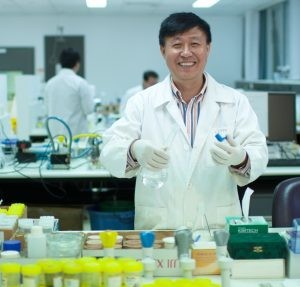Australian-developed, energy-saving, colour-changing 'smart' windows

Australian researchers are developing a window that contains a glass that is able to change its colour and the amount of heat or light it transmits.
Professor Huijun Zhao, director of Griffith’s Centre for Clean Environment and Energy, is leading a $1 million research project into a new kind of low-cost, energy-saving ‘smart window’. Professor Zhao has been awarded $513,210 from the Australian Government through the Australian Research Council’s Linkage Projects scheme to develop the window.
The smart windows are expected to offer significant energy savings by reducing reliance on air conditioning, heating and artificial lighting, according to Professor Zhao.
“Besides residential buildings, this is particularly important for office buildings, hotels and schools where the energy consumption for heating, ventilation and air conditioning (HVAC) and lighting are more than 70% of the total energy consumption,” he said.
“The ease of energy exchange through conventional windows can be almost 10 times that of insulated walls and this energy wastage can account for more than 50% of the energy consumed for HVAC, especially during the summer and winter.”
With “substantial cash and in-kind support” leveraged from partner organisation Confirmation Australia, Zhao and his team will develop low-cost and scalable synthesis of functional nanomaterials that make smart windows work.
The research project will also facilitate the commercialisation of the new windows by investigating how the new materials can be integrated into the glass manufacturing process to assist Australia’s manufacturing industry and environmental sustainability.
“With the advancement of materials science and the Internet of Things, smart windows will be more prevalent and will be important in building automation and energy management. Smart windows can offer several dynamic functions such as self-cleaning, thermochromics and solar-harvesting, and user-controlled functions such as heating, electrochromics and interactive display,” Professor Zhao said.
ARENA invests $21m in three EV charging projects
Funded under the Driving the Nation Program, the projects will focus on developing pathways and...
New facility to boost homegrown solar PV manufacturing
A major solar module manufacturing facility is due to be developed in the NSW Hunter Valley,...
SA's Davenport BESS changes hands
AMPYR Australia has formed an agreement with Green Gold Energy to acquire the Davenport battery...




